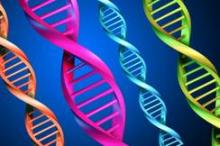When I was in medical school in the early 1990s, the basic model for cancer was that a single cell harboring a mutation, often caused by exposure to tobacco or radiation, was the inciting event leading to malignancy. Over time, this cell divided hundreds of time, developing into a "clonal population" of identically malignant cells able to thwart the body’s immune and cancer surveillance system and resulting eventually in a tumor. Left unchecked, the monoclonal tumor gradually spread around the body, beyond the realm of a surgical cure, leaving toxic chemotherapy as the sole option.
The concept of tumor evolution was mainly framed around tumor growth and perhaps the acquisition of additional mutations that increased tumor aggression. However, even in the multi-step models of tumor progression the implication was that the cancer itself was essentially a monoclonal beast to be removed by the timely surgeon or beaten back by chemotherapy. This model, an oversimplification understandable to medical students, has been questioned in recent years as genetic studies of tumor tissue reveal tumors to be more dynamic and more heterogeneous than originally thought.
An elegant genomics study recently published by Dr. Marco Gerlinger of the Cancer Research UK London Research Institute and colleagues further highlights that cancers can be conceptualized as heterogeneous collections of cancer cells that are constantly evolving and possibly even competing in Darwinian fashion for their right to exist and prosper at the expense of the host (N. Engl. J. Med. 2012;366:10:883-92).
Dr. Gerlinger’s group examined primary and metastatic tumor specimens in four patients with advanced renal cancer. Genomic analysis was done at various time points, including prior to the initiation of chemotherapy and at times of cancer progression. The genomic analysis included whole-exome sequencing, or DNA sequencing of all the known human genes (see "Personalized Genome Around the Corner?" Genetics in Your Practice, March 1, 2010, p. 58), allowing the team to look for the signs of tumor evolution as new genetic mutations arose from primary to metastatic disease as well as after exposure to chemotherapy. Furthermore, it was possible to look at different regions of the tumor specimen at the same time point, directly addressing the dated concept of a tumor being a monoclonal tissue.
The results showed heterogeneity in the tumors with respect to time and exposure to chemotherapy. In one patient – from who over a dozen different tumor specimens were analyzed, including nine from different regions of the surgically excised primary tumor – over 125 genetic mutations were identified in the primary analysis. A subset was then validated to confirm the findings of the initial genomic analysis.
Several interesting findings came out of the work. Roughly one-third of the mutations present in all biopsy specimens from the patient fit with the monoclonal model. An additional 45% were shared by some but not all tumor samples, and just over 20% were seemingly unique and present in just a single biopsy. This meant that, overall, most mutations detected were not found in all tumor specimens and that regional differences across the tumor were quite prevalent.
Although not all of these mutations likely contribute to the behavior of the cancer, the data do paint a picture of a tumor that is nonuniform in a genetic sense, with evidence for genetic uniqueness when one drills down to the level of a specific tumor region. There could be unique mutations present in just one or a few cells, although the study did not reach this degree of granularity.
Interestingly, some mutations appeared to arise more than once and, as a given tumor progressed, seemed to increase temporally in the tumor, a form of convergent evolution. This suggests that various natural selection forces, including perhaps exposure to chemotherapy, fueled a Darwinian selection process as the tumors adapted in ways that favored growth and propagation.
The fact that this intra-tumor heterogeneity and "oncogenic Darwinism" occurs in tumors is sobering. It implies that each tumor represents not just a unique substrate for a given patient, but rather a collection of multiple unique communities of cancer cells.
Just as DNA fingerprinting reveals that every individual, save identical twins, is genetically unique, these tumor data show that it may be true that each separate cancer is unique and even that each cancer within an individual is constantly evolving from a genetic standpoint. Some of this variation may explain the limitations of chemotherapies that cannot always eradicate a cancer. Furthermore, the data raise questions about how to design personalized therapies that specifically address the moving target problem of a heterogeneous and dynamically evolving tumor.


